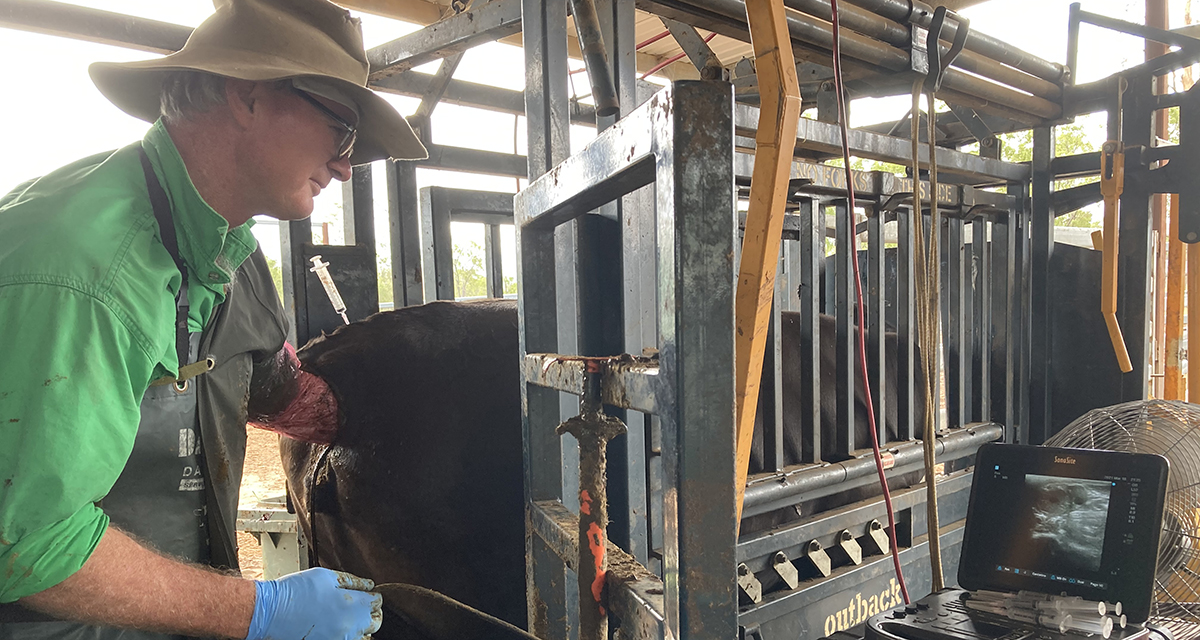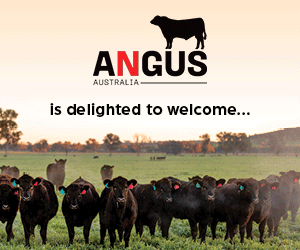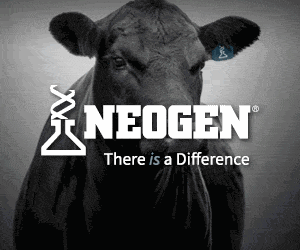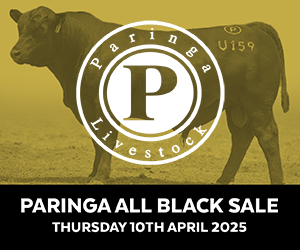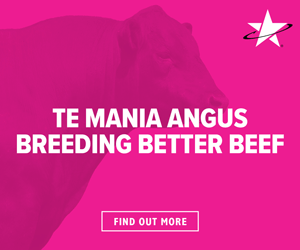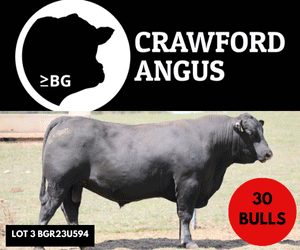Advances in assisted reproductive technologies combined with the stars aligning in terms of strong cattle market conditions and season conditions, has many stakeholders realising the benefits of fine-tuning their Artificial Insemination (AI) programs; particularly in heifers.
Introduction
The degree of success (or otherwise) of an AI program is highly correlated to the size of the follicle at the time of AI. The follicle being a fluid filled sac present on the ovary that houses the ovum (egg) prior to ovulation. At ovulation, the ovum is released into the reproductive tract ready to be fertilised. The follicle is easily viewed, assessed and measured by a competent technician using ultrasound. Ideally, at the time of AI, we need the synchronisation program to produce a single dominant follicle greater than 10mm in diameter (13mm is optimal) in as many females as possible.
If there are no dominant follicles at the time of AI, a number of possibilities should be considered e.g. the heifer may not have responded to the synchrony medications, treatments may not have been administered on time or she may have just ovulated. At this stage, you may decide not to AI the heifer or use less expensive bull semen instead. As in all of these scenarios, the likelihood of conception is reduced.
On the other hand, some heifers may have two dominant follicles on their ovaries at the time of AI. If both these follicles ovulate, the chance of twinning is very high. If the follicles are on separate ovaries, AI can be undertaken in the horn on the same side as the largest dominant follicle. If however the follicles are on the same ovary, you may elect not to AI. If you do choose to AI in these circumstances, it is worthwhile conducting an early pregnancy diagnosis by ultrasound to identify potential twin pregnancy.
Fourteen days after the AI program, bulls go into cover the heifers that return.
Micromanagement
At 11 weeks from AI (i.e. at pregnancy testing), ultrasound is being used increasingly to check:
- the foetus is alive (beating heart)
- for twinning; and
- the sex of the foetus (foetal sexing).
The foetal age at this pregnancy test will be 11 weeks, or approximately 8 weeks and 5 weeks if she has gone in calf to cover bulls.
The future of a heifer that has not conceived to AI or two subsequent rounds of natural service would now be in question.
No beating heart
All too often, vets and AI technicians come across foetuses with either no heart beat or symptoms that something isn’t right e.g. flocculent material in the amniotic fluid; the foetus is out of shape or may have collapsed eyeballs. Generally these foetuses will be aborted naturally and it then becomes a management decision to try and re-join them and sell them as preg-tested in calf (PTIC) or empty. Vibrio is a common, and easily preventable culprit of high foetal losses.
Twins
During pregnancy testing, it is important to refer to the AI notes and examine both ovaries for the presence of a Corpus luteum (CL). Two CL’s can mean two foetuses given identical twins from a single ovulation are uncommon. Once identified, the heifers carrying twins can be calved as a separate mob and one of the calves hand reared or fostered to another cow.
Foetal Sexing
Foetal sexing with ultrasound can be performed between 8 weeks and 12 weeks gestation. At this stage the foetus is still able to be easily reached and the genital tubercle has migrated into a suitable position to determine foetal sex. When the foetuses are of mixed sex and both in the same uterine horn the female is almost always infertile (Freemartinism).
Summary
The techniques described above require the use of a good quality ultrasound machine and detailed training in ovarian function and foetal sexing. Given the additional work required, ultrasound will slow down the rate of insemination and pregnancy testing and will therefore not suit all management systems.
It will however give detailed information on the effectiveness of your synchrony program, selective use of expensive semen or sexed-semen on heifers with better follicles, reduce the twinning rate and enable less fertile heifers to be culled earlier.
For more information on maximising the results from your AI program, see the Repro360 Checklist at repro360.com.au/AI_Checklist or call Julie Pocock on 0423 828 050 with any questions.

